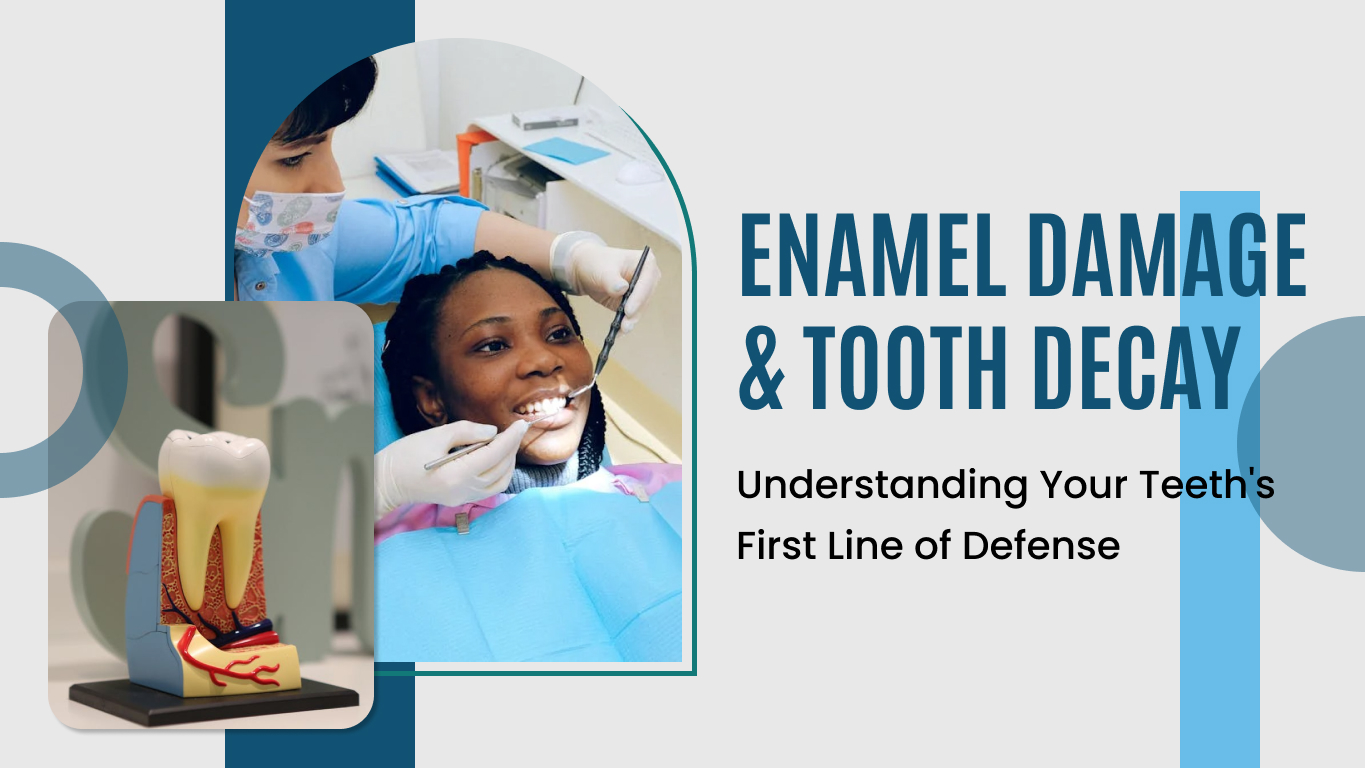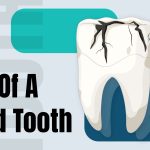Your teeth work tirelessly daily, helping you chew, speak, and confidently smile. At the forefront of this daily battle against wear and tear stands tooth enamel the hardest substance in the human body and your teeth’s primary defense against decay. Yet, despite its remarkable strength, enamel can be damaged, leading to serious dental problems affecting millions worldwide.
What Is Tooth Enamel?
Tooth enamel is the translucent outer layer covering each tooth’s crown. This remarkable substance is more complex than steel and is primarily composed of hydroxyapatite crystals. Enamel serves as a protective shell, shielding the more sensitive inner layers of your teeth, the dentin and pulp, from bacteria, temperature changes, and the mechanical forces of chewing.
Unlike other tissues, enamel contains no living cells, so it cannot regenerate once damaged or lost. This unique characteristic makes protecting your enamel crucial for maintaining long-term oral health.
How Enamel Damage Occurs
Enamel damage doesn’t happen overnight. It typically results from a gradual demineralization process, where acids dissolve the mineral crystals that strengthen enamel. These acids come from two primary sources:
Dietary Acids: Consuming acidic foods and beverages such as citrus fruits, sodas, sports drinks, and wine can erode enamel. Even seemingly healthy choices like fruit juices can be surprisingly acidic and harmful to tooth enamel when consumed frequently.
Bacterial Acids: A more concerning source is harmful bacteria in your mouth. These bacteria feed on sugars and starches from food particles, producing acid as a waste product. This acid attacks your enamel, creating an environment ripe for tooth decay.
Other factors contributing to enamel damage include teeth grinding (bruxism), acid reflux disease, certain medications that reduce saliva production, and aggressive brushing with hard-bristled toothbrushes.
The Connection Between Enamel Damage and Tooth Decay
When enamel becomes weakened or develops microscopic holes, it can no longer effectively protect the tooth’s interior. This creates the perfect opportunity for tooth decay to begin. The process typically follows this progression:
Initially, acids create tiny pores in the enamel surface, a stage called incipient decay. The damage may still be reversible through remineralization with fluoride treatments and improved oral hygiene.
As acid attacks continue, these pores enlarge and deepen, eventually forming cavities that penetrate the enamel into the softer dentin layer beneath. Once decay reaches the dentin, it spreads more rapidly because dentin is less mineralized and more vulnerable to bacterial invasion.
If left untreated, decay can progress deeper into the tooth, eventually reaching the pulp where nerves and blood vessels reside. This can result in severe pain, infection, and potentially tooth loss.
Recognizing the Warning Signs
Early enamel damage often occurs without obvious symptoms, making regular dental checkups essential for early detection. However, as damage progresses, you might notice:
- Increased tooth sensitivity, particularly to hot, cold, or sweet foods and beverages
- White or chalky spots on teeth, indicating early demineralization
- Yellow or brown discoloration as the underlying dentin becomes more visible
- Rough or uneven tooth surfaces
- Small pits or holes in teeth
- Pain when biting down
Prevention: Your Best Defense
Preventing enamel damage requires a comprehensive approach that addresses both dietary and hygiene factors:
Optimize Your Diet: Limit consumption of acidic and sugary foods and beverages. When you do indulge, try to consume them during meals rather than sipping or snacking throughout the day. This gives your saliva time to neutralize acids between eating occasions.
Practice Excellent Oral Hygiene: Brush twice daily with fluoride toothpaste using a soft-bristled toothbrush. Wait at least 30-60 minutes after eating before brushing to allow your saliva to neutralize acids and prevent brushing away softened enamel.
Use Fluoride: Fluoride helps remineralize early enamel damage and makes teeth more resistant to acid attacks. Consider using a fluoride mouthwash in addition to fluoride toothpaste.
Stay Hydrated: Drinking plenty of water helps maintain saliva production, naturally cleansing your mouth and neutralizing harmful acids.
Don’t Use Your Teeth as Tools: Avoid using teeth to open packages, crack nuts, or hold objects, as this can chip or crack enamel.
Treatment Options
When enamel damage does occur, early intervention is key. Modern dentistry offers several treatment options depending on the extent of damage:
Professional fluoride treatments and prescription fluoride products can help reverse the damage through remineralization for early-stage demineralization.
Small cavities typically require dental fillings using tooth-colored composite materials that restore function and appearance.
More extensive damage might necessitate crowns, which cover and protect the entire visible portion of the tooth.
In cases where decay has reached the tooth’s pulp, root canal therapy may be necessary to save the tooth.
Conclusion
Understanding the relationship between enamel damage and tooth decay empowers you to protect your oral health proactively. While enamel damage can seem inevitable, the right combination of preventive care, dietary awareness, and professional dental treatment can keep your teeth healthy for a lifetime.
At Carrum Downs Dental, our experienced team is committed to helping you maintain optimal oral health through comprehensive preventive care and advanced treatment options. Located conveniently at Shop T5, 100 Hall Road, Carrum Downs, we’re open seven days a week from 9 am to 5 pm to accommodate your busy schedule. Whether you need routine cleaning, fluoride treatment, or restorative care for existing damage, our skilled professionals are here to help you achieve and maintain a beautiful smile. Don’t wait until minor problems become big Contact Carrum Downs Dental today to schedule your consultation and take the first step toward protecting your enamel and preventing tooth decay.
Related Post –
Understanding the Stages Of Tooth Decay


